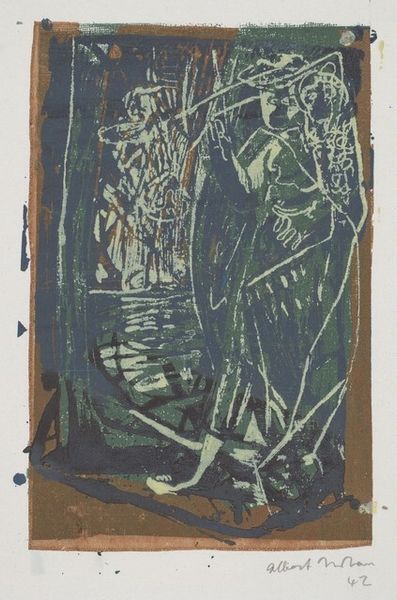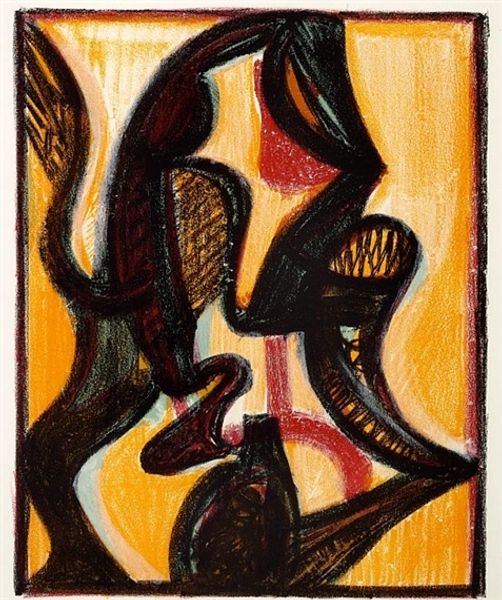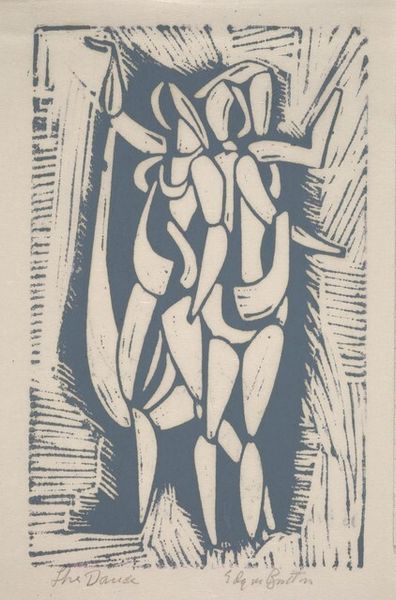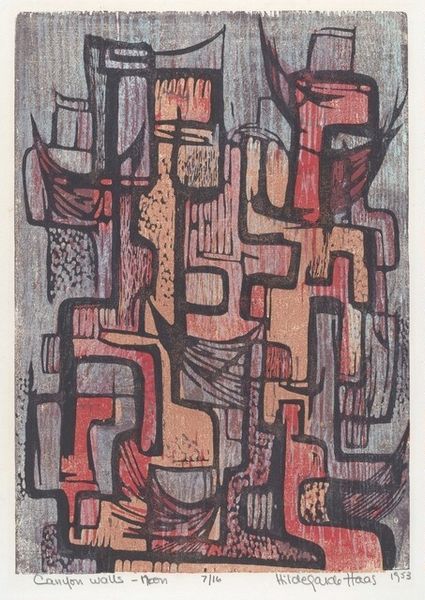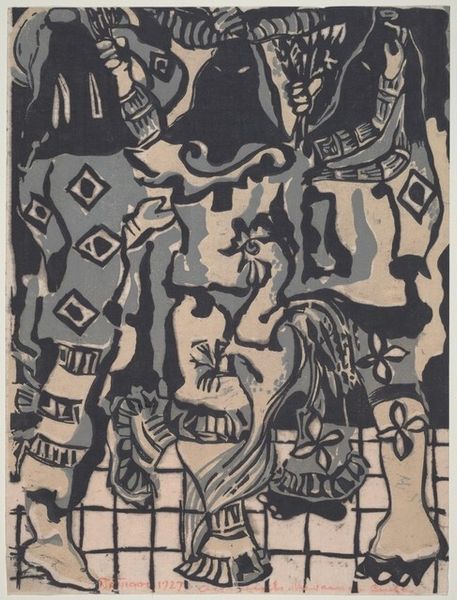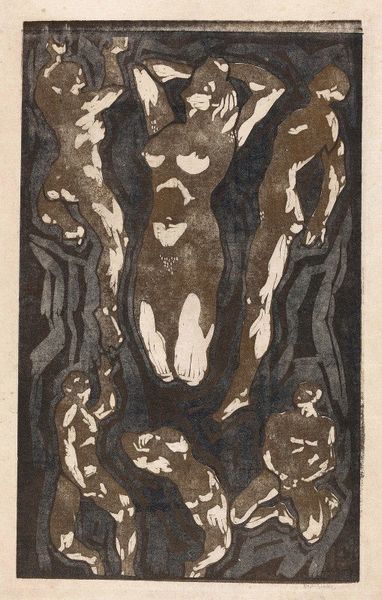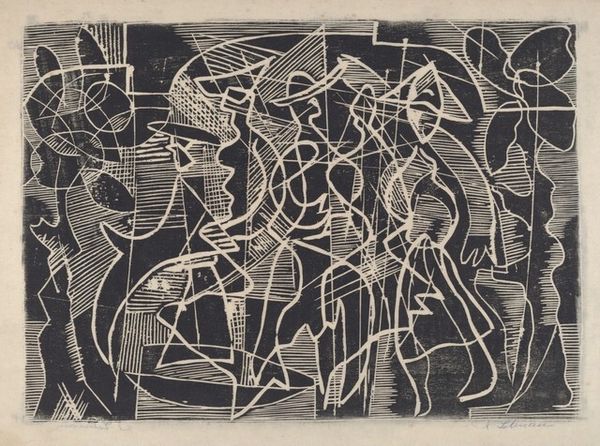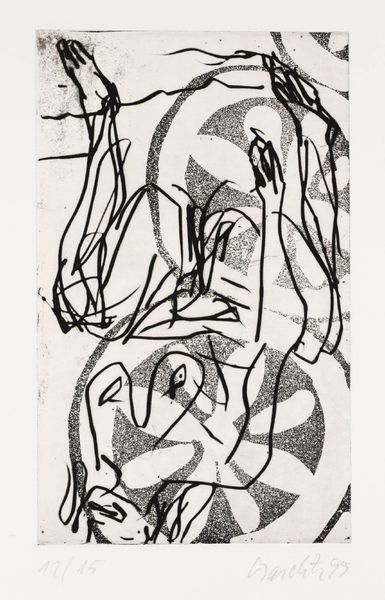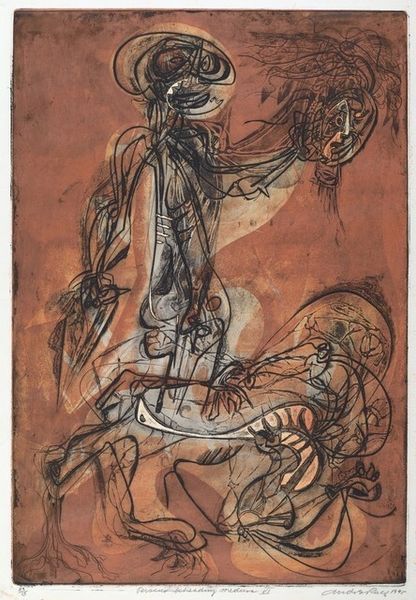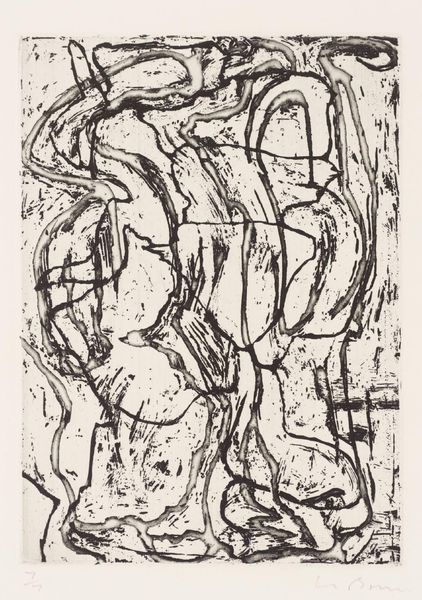
mixed-media, print, ink
#
mixed-media
#
abstract painting
#
ink painting
# print
#
figuration
#
ink
#
abstraction
#
line
#
mixed medium
Dimensions: overall: 52.1 x 38.1 cm (20 1/2 x 15 in.)
Copyright: National Gallery of Art: CC0 1.0
Curator: We’re now looking at Adja Yunkers' "Las Lolitas," created in 1952, a mixed-media piece that seems to blend printmaking techniques with ink work. Editor: My first impression is its energy, almost chaotic. There’s a tension between the figuration and the abstraction that makes the piece seem restless, the figures seemingly in motion or caught in a transient state. Curator: Indeed. The dynamism comes from the artist’s strategic use of line. Notice how Yunkers employs stark, black lines to delineate forms that, upon closer inspection, dissolve into abstract shapes and planes. The linear quality emphasizes not just form, but also movement and rhythm across the surface. Editor: Yet, what exactly is the subject matter? "Las Lolitas," especially given the context of 1952, carries such loaded implications that must be unpacked. How does the work grapple with themes of female adolescence and representation during a time of shifting cultural mores? Are we meant to gaze at the figures or consider their agency and visibility in art? Curator: Semiotically, we could interpret these forms as studies of female adolescence. It could also represent a visual play of dualities--innocence versus experience, the representational versus the abstract. The deliberate obfuscation of features prompts more questions than it provides answers. The layering of visual elements serves to explore rather than explicitly define the depicted subjects. Editor: This is true, however, one should be aware that any deconstruction of "Lolita" as a figure can easily slip into problematic fetishization, especially if we overlook Yunkers' biography as a female artist in a male-dominated sphere who also experimented with print. This gives nuance to how we discuss these representations of girlhood. What is the intention, and to whom are these girls visible? What conversations can we incite by positioning the artwork within that specific intersection? Curator: I appreciate you calling attention to such layered contexts and meanings. In closing, to approach this work with sensitivity will give the viewer a far deeper understanding of how line, form and subjecthood are inextricably linked. Editor: By embracing multifaceted interpretations that engage with both historical context and formal analysis, we enrich our engagement with artwork that would otherwise elude the canon.
Comments
No comments
Be the first to comment and join the conversation on the ultimate creative platform.

